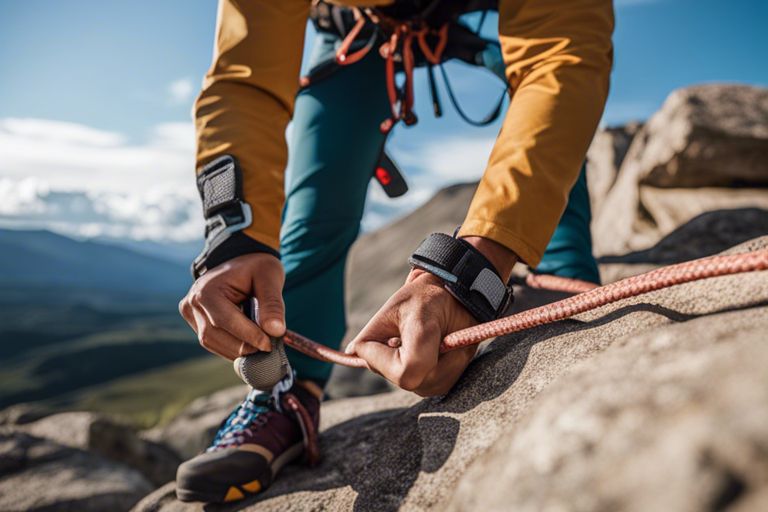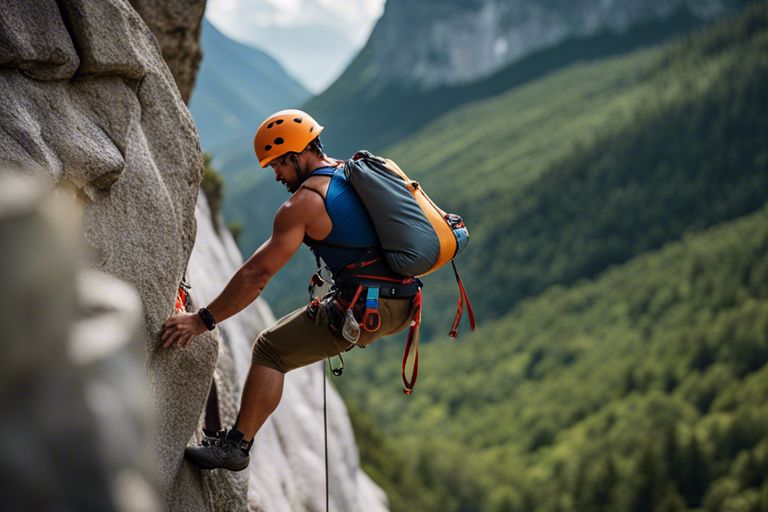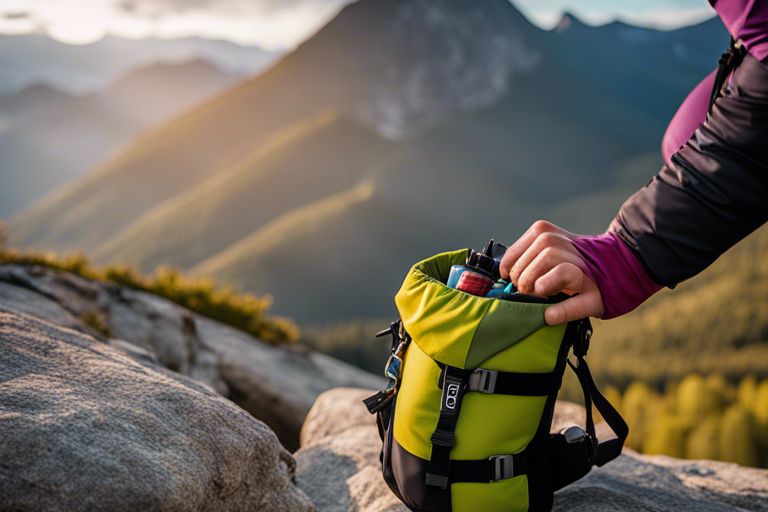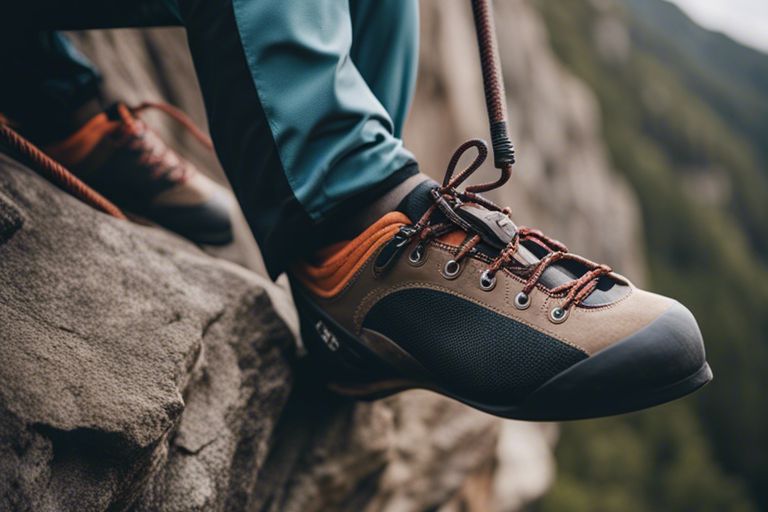Just like a reliable partner in your climbing adventures, a chalk bag is imperative for keeping your hands dry and maximizing your grip. Understanding how to properly use a chalk bag can drastically enhance your performance on the rock or at the gym. In this guide, we’ll walk you through the steps to efficiently use your chalk bag, ensuring you get the most out of your climbing experience while minimizing distractions. Get ready to chalk up and conquer your next ascent!
Understanding the Chalk Bag
What is a Chalk Bag?
The chalk bag is an crucial tool for climbers, boulders, and gym-goers alike. It is a small pouch designed to hold climbing chalk, enabling you to keep your hands dry and improve your grip on climbing holds. These bags typically come with a drawstring closure, allowing for easy access while ensuring that the chalk remains contained when not in use. Chalk bags often feature a loop for attaching to your harness, a belt, or even your waist, making them easy to carry during your climbing sessions.
To enhance your climbing experience, many chalk bags come equipped with additional features, such as inner pockets for storing small items like keys or money, and external brush holders for cleaning holds. With the variety of designs and colors available, choosing a chalk bag that reflects your personal style while providing functionality is part of the fun.
Importance of Using a Chalk Bag
Little do some climbers realize just how critical having a chalk bag can be to their overall performance. Keeping your hands dry while climbing is paramount—which is where chalk comes into play. When you climb, your palms can become sweaty, making it difficult to maintain your grip. A chalk bag allows you to conveniently reapply chalk as needed, ensuring that you can perform at your best without the distraction of slippery holds.
Chalk improves your grip by absorbing moisture, which helps you feel more secure on the rock or climbing wall. By using a chalk bag, you can easily access the chalk, allowing you to focus on your movements and techniques without losing momentum. Furthermore, cultivating good chalk habits, such as ensuring your bag is always accessible and checking it before every climbing session, can boost your confidence and enhance your overall climbing experience.
Chalk also serves an important purpose beyond just grip enhancement; its use can prevent injury. When your hands are dry, you’re less likely to slip, which decreases your chances of falls and the subsequent accidents that can happen during climbing. By incorporating a chalk bag into your climbing gear, you’re investing in your safety and performance.

Choosing the Right Chalk Bag
You may think that all chalk bags are the same, but choosing the right one can significantly enhance your climbing experience. While there are various styles and designs available, it’s important to understand the differences to find the one that’s best suited to your climbing needs.
Types of Chalk Bags
When venturing into the world of chalk bags, you’ll encounter a range of options based on your specific climbing style and preferences. Here’s a breakdown of some of the most common types:
| Type | Description |
|---|---|
| Standard Chalk Bags | Ideal for general use, typically larger and offers easy access with a drawstring closure. |
| Sport Climbing Chalk Bags | Designed for quick access, often with a slim profile and lightweight material. |
| Boulder Bags | Incorporate a wider opening to facilitate easy dipping of hands into chalk. |
| Kids’ Chalk Bags | Smaller, playful designs that cater specifically to young climbers. |
| Specialized Bags | Can include features like zippers, harness integration, or storage for multiple chalk types. |
Any chalk bag you choose will be an extension of your climbing gear, so consider your personal preference and style when making a decision.
Factors to Consider When Choosing
Little do many climbers realize that selecting the right chalk bag involves more than aesthetic appeal. It’s crucial to consider practical factors that can affect not only how easily you can chalk up but also your overall comfort and performance while climbing.
- Size: Ensure that the bag is large enough for your hand but small enough to remain manageable.
- Material: Look for durable, yet lightweight materials that can withstand heavy use.
- Closure Type: Decide between a drawstring, zippered, or even Velcro closure based on convenience.
- Attachment Features: Consider how the bag attaches to your harness or belt, if it has loops or clips included.
- Design: Choose a bag with vibrant colors or patterns that appeal to you personally.
Thou should also think about how the bag’s design fits with your climbing style—whether you prefer bouldering, sport climbing, or traditional routes can influence your choice.
- Comfort: Ensure the bag feels good against your body and doesn’t restrict movement.
- Accessibility: Opt for a bag that allows easy access, minimizing the time spent chalking up.
- Weight: The lighter the bag, the less burden you’ll carry, especially on longer climbs.
- Price: Set a budget that balances quality with cost; high-end bags often offer better durability.
- Reviews: Consider user reviews to understand how well a bag holds up in real-world conditions.
Factors like these can affect your climbing performance over time, so make an informed decision to optimize your climbing sessions.

Preparing Your Chalk Bag for Use
Now that you’re ready to hit the climbing gym or tackle that outdoor bouldering problem, it’s necessary to prepare your chalk bag properly to maximize its effectiveness and convenience. To do this, you’ll need to select the right chalk, fill your chalk bag correctly, and ensure that it is easily accessible when you need it. Each step is critical for optimizing your climbing experience and maintaining your performance on the wall.
Selecting the Right Chalk
One of the first steps in preparing your chalk bag is selecting the right type of chalk for your climbing style. There are various options available, including loose chalk, chalk balls, and liquid chalk. Loose chalk provides excellent grip and is popular among climbers focused on bouldering, whereas chalk balls can minimize mess and are great for roped climbing. Liquid chalk combines a chalk and alcohol mixture that dries quickly and provides a solid grip while reducing the amount of chalk dust in the air.
One thing to keep in mind is that each type of chalk has its pros and cons. Loose chalk is ideal for maximum grip, but it can create a chalk storm, leaving a trail of mess. Chalk balls, on the other hand, are less messy but may require more frequent applications to maintain grip. Liquid chalk, while effective, tends to dry out quickly and may need reapplication during your climb. Choose a type based on your preference and the type of climbing you’ll be doing.
Filling Your Chalk Bag Properly
One of the pivotal aspects of preparing your chalk bag is how you fill it. Too little chalk will leave you scrambling for grip during your climb, while too much chalk may make your bag cumbersome and less convenient to use. Start by adding just enough chalk to cover the bottom, allowing for light pressure when you reach inside. If you prefer loose chalk, be careful not to overfill; a little goes a long way when it comes to finding the perfect grip.
Chalk can also clump together if packed too tightly, reducing its effectiveness and requiring you to dig through your bag for usable chalk. To avoid this, consider tapping the bag gently on a hard surface before your climb to help break up any clumps that may have formed, ensuring you get a fine consistency when you reach for your chalk. This will lead to a better climbing experience by preventing those awkward moments of struggling to chalk up.
Ensuring Accessibility
Ensuring that your chalk bag is easily accessible while climbing can greatly enhance your experience. Position your chalk bag at a comfortable height on your waist or hip, allowing you to reach it with minimal effort. Many climbers find that using a carabiner to attach their chalk bag to their harness can provide added stability while making it easier to grab between moves.
Ensuring accessibility is also about being mindful of how your climbing movements may affect your chalk bag’s placement. Consider where you tend to chalk up during your climbs, and adjust the bag’s position accordingly to make it easier to reach. Additionally, practice reaching for your bag while practicing your climbing movements; this will allow you to develop a feel for efficient movement on the wall, saving you precious seconds and energy.
For instance, testing the bag’s placement during a warm-up can help you find the sweet spot that feels natural and allows your hand to flow toward the chalk bag intuitively. Making small adjustments based on your climbing style will optimize your reach and make chalking up a seamless part of your climb.
How to Use a Chalk Bag Effectively
To maximize your climbing experience and maintain a solid grip on the rock, using your chalk bag effectively is vital. Begin by ensuring that you secure the chalk bag to your harness using its loop or clip. This keeps it conveniently within reach while allowing you to focus on your climbing. You want to avoid fidgeting with the bag or wasting energy, so find a comfortable position that allows you to access it smoothly. Once it is secured, you can concentrate fully on your ascent.
Maintaining Proper Grip
Now that your chalk bag is ready, the next step is maintaining a proper grip while climbing. Regularly chalking your hands will help you manage moisture, which is important for ensuring your grip on holds remains strong. Before you start climbing, take a moment to check your hands and apply chalk generously. Pay attention to the areas where you typically sweat more, like your palms and between your fingers, and make sure those spots are well-covered.
As you climb, remember to chalk up as needed. It’s advisable to do this during any pauses or rests you take, even if they are brief. Continuous chalk application reinforces your grip throughout the climb, helping you avoid slips that can lead to falls or fatigue. Keeping your hands dry and well-chalked will greatly enhance your ability to tackle tougher routes.
Approaching Chalk Application
Proper chalk application is key to keeping your hands dry and ensuring that you perform at your best. When you find a moment to pause and chalk up, try to use a little style: simply dip your fingers into the chalk bag and give a light squeeze. Avoid overloading your hands with chalk, as excess can create a mess and even hinder your grip by making it slick. Instead, aim for a thin layer that removes moisture while allowing your skin’s natural texture to maintain hold.
Plus, don’t forget to periodically check your chalk bag and refill it if you notice that the chalk is dwindling. Chalk bags can often hold enough chalk for several climbs, but if you take heavy chalking breaks or are on a long climbing route, it’s wise to keep an eye on your supply. A well-stocked chalk bag can help you maintain a steady level of grip throughout your climbing session.
Avoiding Common Mistakes
Now that you’re familiar with how to apply chalk effectively, it’s crucial to be mindful of common mistakes that can affect your performance. One common error is chalking up too frequently or excessively, which can lead to wasted time and unnecessary mess. Remember that it’s about quality, not quantity—if you stick to the advised application technique, you’ll find that you won’t need to chalk as often as you might think.
Approaching the task of chalking with focus will undoubtedly enhance your climbing experience. Make an effort to incorporate chalking as a strategic part of your climbing routine rather than a reactive measure. Doing so ensures that you keep your climbs efficient and enjoyable, while also reinforcing the importance of grip management during your ascent.
Tips for Maintaining Your Chalk Bag
For any climber, a well-maintained chalk bag is crucial for optimal performance and longevity. By following some useful tips, you can ensure your chalk bag stays in top condition. Here are some recommendations:
- Regularly clean your chalk bag to prevent build-up of chalk residue.
- Avoid overfilling your bag to maintain its shape and usability.
- Inspect the stitching and fabric for any signs of wear or tear.
- Keep it dry and store in a cool place to prevent mold or mildew.
- Choose a bag with a secure closure to keep the chalk from spilling.
Thou will find that these practices not only improve the performance of your gear but also extend its life.
Cleaning Your Chalk Bag
With time, your chalk bag will accumulate chalk dust and dirt, which can affect its appearance and functionality. To clean your chalk bag, start by emptying all the chalk and any debris inside. You can gently brush off the exterior with a soft brush or cloth to remove dust, while the interior can typically be cleaned with a damp cloth. If your bag is machine washable, you can toss it in the washing machine on a gentle cycle. Be sure to air dry it completely before using it again to avoid mildew.
It’s important to avoid using harsh chemicals or bleach, as these can damage the fabric and stitching of your chalk bag. Regular cleaning not only keeps your bag looking fresh but also ensures a pleasant climbing experience, free from distractions posed by a grimy bag.
Storing Your Chalk Bag
Some climbers may not consider how they store their chalk bag, but it can play a significant role in its longevity. After each climbing session, make sure to store your chalk bag in a dry area where it is not likely to be crushed or damaged. It’s best to keep it away from direct sunlight to prevent fading and degradation of the fabric. Utilize storage methods that allow your bag to maintain its shape, such as hanging it or placing it in a dedicated space.
This thoughtful approach not only protects your bag but also keeps it readily accessible for your next climbing adventure. A designated storage space can also help you keep track of other climbing gear, ensuring you have everything you need when it’s time to hit the rocks.
Recognizing Signs of Wear
Now that you’ve invested in a quality chalk bag, it’s crucial to recognize when it’s beginning to show signs of wear. Frequent usage can eventually lead to frayed edges, loose stitching, or a compromised closure system. Pay close attention to these aspects, as they can significantly affect your performance during climbs. If you find any wear, it may be worth repairing or considering a replacement before your next climbing trip.
The ability to spot these issues early can save you both time and money and will ensure your climbing sessions are as effective and enjoyable as possible. Knowing when to replace your chalk bag is an important aspect of maintaining your overall climbing gear.

Alternative Uses for Chalk Bags
Unlike what you might initially think, chalk bags are not solely reserved for the climbing community. These versatile accessories can be utilized in a myriad of ways that extend well beyond scaling rock faces. Whether you want to modify your chalk bag for a different purpose or simply repurpose one you already own, there are several creative and practical alternative applications to consider.
Non-Climbing Applications
Applications for chalk bags outside of climbing can include anything from gym workouts to general storage. For instance, they can serve as a convenient way to carry your gym vitals such as resistance bands, grips, or even your phone and keys while exercising. The drawstring closure is perfect for keeping your belongings secure during workouts, allowing you to focus on your fitness without the distraction of loose items.
Additionally, chalk bags are excellent for organizing small items at home or during travel. Whether you’re storing miscellaneous tools, art supplies, or toiletries, a chalk bag can be a stylish and functional solution. Their lightweight design means you can easily pack them away for a trip, providing extra storage without taking up considerable space.
Creative Uses in Other Sports
If you’re open to exploring uses for your chalk bag in other sports, you’ll find that its functionality can seamlessly transition into various activities. For example, if you participate in gymnastics, your chalk bag can hold your chalk for uneven bars, rings, or floor routines. The pouch makes it easy to reach for your chalk as needed, enhancing your grip and performance on the apparatus.
It’s also worth noting that many athletes incorporate chalk bags into their training routines for sports like CrossFit or powerlifting. They can carry chalk for improved grip during weightlifting sessions or provide a handy way to store quick snacks or energy gels while you train. The versatility of chalk bags ensures that whether you’re into weightlifting, gymnastics, or even recreational sports, they can enhance your performance and organization in a number of unique ways.
Summing Up
Upon reflecting on how to use a chalk bag, you should feel more equipped to enhance your climbing experience. Whether you are bouldering, sport climbing, or tackling more challenging routes, knowing how to properly access and apply chalk from your bag can greatly improve your grip and overall performance. Remember to attach your chalk bag securely to your harness or waist using a clip, allowing you easy access while keeping your movements fluid and natural. Regularly check your chalk supply and ensure that your bag is positioned conveniently for quick application during climbs.
Additionally, you might find it helpful to maintain your chalk bag and its contents for optimal use. Keeping your chalk dry and free from contaminants will help preserve its effectiveness. If you’ve decided to use powdered chalk, take care when refilling your bag to avoid spills and messes. With practice and attention to detail, you will become adept at utilizing your chalk bag, ultimately elevating your climbing experience and allowing you to focus on your ascent with confidence.




